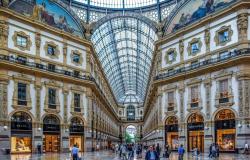
The eyes of culture and art focused on Paternò (Catania). The pioneering and artistic genius of the painter Sofonisba Anguissola will be told by national, international experts and scholars on Friday 12 April at 5pm in the former Monastery of San Francesco alla Collina, in Paternò. The cultural meeting, entitled “Together for Sofonisba”, is organized by the Sicilian Regional Assembly and the Federico II Foundation with the precious collaboration of the municipality of Paternò, the Church of Santa Maria dell’Alto, the Cervantes Institute of Palermo , of the Academy of Fine Arts of Catania with the patronage of the Spanish Embassy.
The choice of Paternò as the venue for the meeting does not appear to be casual. In fact, since the end of 2023, two of the most famous paintings by the Cremonese painter, the Madonna dell’Itria and the Madonna della Raccomandata, have been exhibited in the chapel built inside the former San Francesco alla Collina Monastery.
The initiative aims to recompose the artistic heritage linked to the painter who, with her talent and her life, marked the path of female affirmation in difficult times. Trapped in a male universe, Sofonisba was not the first woman to paint. But with her strong personality she carved out important margins of autonomy that made her famous in Italy and Spain.
The cultural meeting will be opened by institutional greetings from the President of the Ars and the Federico II Foundation, Gaetano Galvagno; of the national deputy, Francesco Maria Salvatore Ciancitto and of the mayor of the municipality of Paternò, Nino Naso.
Speaking on Sofonisba Anguissola will be Leticia Ruiz Gómez, a great connoisseur of the artist who holds the role of director of the Royal Collections of the National Heritage of Spain; Lina Scalisi, professor of Modern History at the University of Catania; Alfio Nicotra, art critic; Vittoria Vaccaro, doctor of Philosophy from the Scuola Normale of Pisa.
“The Federico II Foundation – says Gaetano Galvagno, President of the Ars and the Foundation – is attentive to the objective of valorisation, starting from that artistic and ideal heritage that exceptional artists such as Sofonisba have left to our island. Bringing the Madonna dell’Itria back to Paternò was a significant step but it represents a starting point, we don’t want to limit ourselves to preserving it. In fact, in recent months we have started to develop focuses to spread awareness of a unique artist like Anguissola who lived in Paternò for five years. Thus the world of culture and art once again turns its sights on Paternò and imagine a shared program that aims at quality tourism involving the entire area”.
Identity heritage
Sicily, as well as Cremona, feel Sofonisba’s work as an identity heritage. It is no coincidence that the Federico II Foundation has chosen to support this important cultural operation promoted, initially, by the parish priest Salvatore Patanè and the municipality of Paternò.
Likewise, the choice of the former monastery also has a specific reason: the Convent of San Francesco alla Collina has, in fact, its origins in 1806, when the great count Ruggero had a church built on the hill of Paternò in honor of St. George. The building in 1114 was erected as a royal chapel by Roger II; it was subsequently handed over to the Benedictine monks. Precisely that Roger who was responsible for the construction of the Palatine Chapel at the Royal Palace of Palermo.





